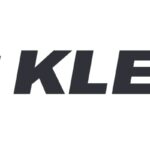SFB Member: I just thought I’d maybe get your experience of when it’s best to use a project manager versus an account manager, or if there comes a time when you need both.
James: What do you think the difference is between those two titles?
SBF Member: From my understanding, the project manager’s job is just to get things done on time. And an account manager is there to manage the success of a client’s account. That’s kind of my understanding. I don’t know if that’s accurate.
James: Sure. I mean, when we had 65 people, we had about seven or eight people who were using our support desk, and they would be probably classified as a bit of a project manager because they were interfacing between the customer and the team who are delivering the work. But I guess it’s kind of an account management thing too, you know, like they were the face of the customer they were dealing with. But they had to get stuff done.
The teams had little engine rooms, you know, there were pods of three, we had team leaders, and we had a team, you know, an overall department head. I don’t get hung up on titles too much, I’d be more interested in looking at how you break it down into a bunch of tasks. And I would be especially interested in answering the question, how much pain would you be in when this person leaves? Because that’s the question you need to answer.
And I want to draw your attention specifically to one of the words that I put in there, which is when. It’s not even an if. We must assume that every person in our business will leave, including ourselves. And that covers off the event of a sale because if the business is sold, and you leave, who does what you do? How much would that cost? And that would factor in determining what the profit is.
Access the rest of the recording inside SuperFastBusiness
See our products HERE









Leave a Reply